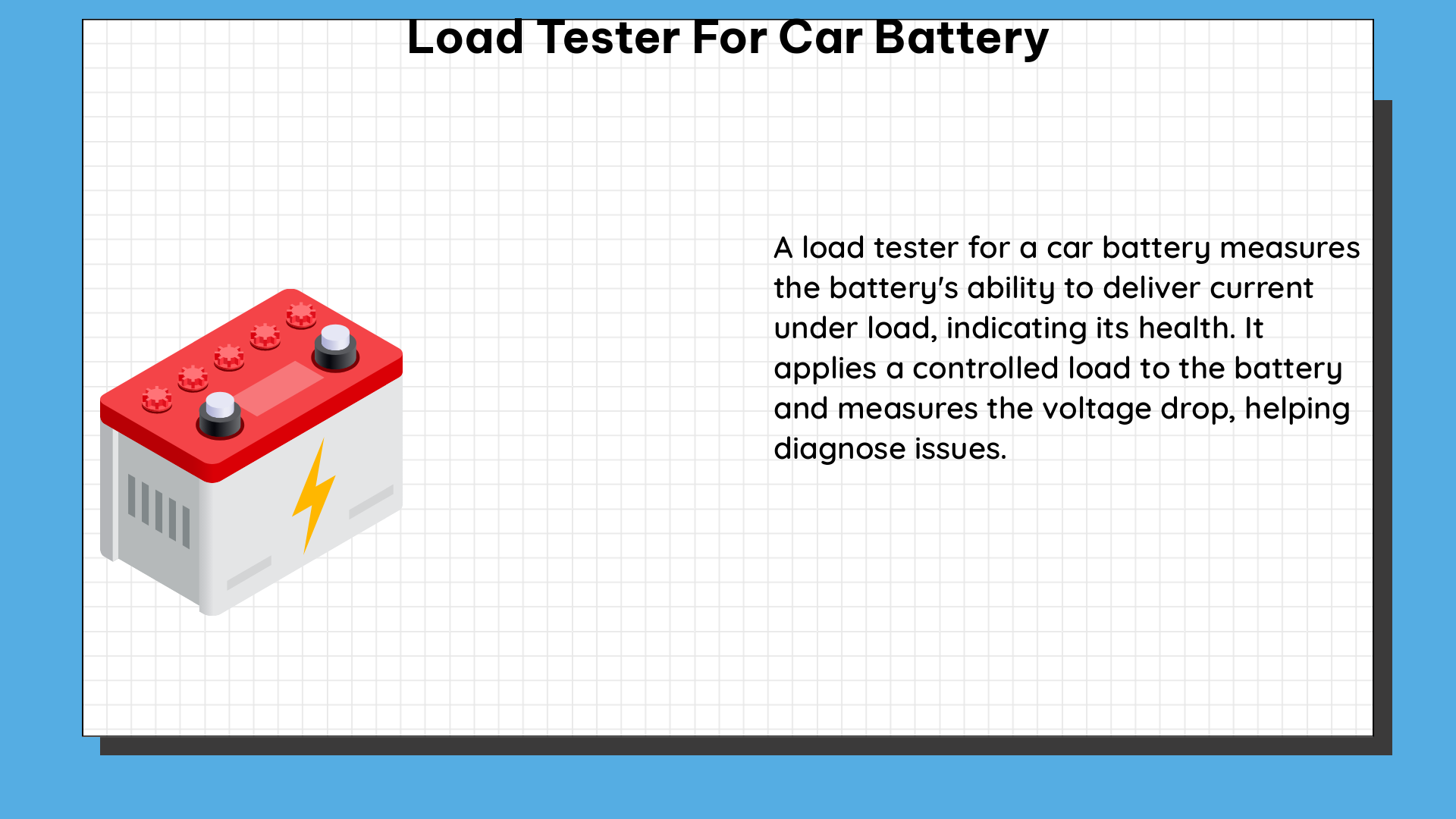Accurately testing a car battery is crucial to ensure its optimal performance and longevity. A load tester is an essential tool for evaluating a battery’s condition under simulated starting conditions, providing valuable insights into its state of charge (SoC), internal resistance, and voltage. This comprehensive guide will delve into the intricacies of load testing car batteries, equipping you with the knowledge to make informed decisions about your vehicle’s power source.
Understanding the Importance of Load Testing
A car battery’s performance is influenced by various factors, including its SoC, internal resistance, and temperature. Load testing is a crucial step in assessing the battery’s overall health and readiness to handle the demands of starting the vehicle. By applying a specific load to the battery, the load tester simulates the high current draw during cranking, revealing the battery’s ability to maintain voltage under stress.
Evaluating the State of Charge (SoC)

Accurately determining the battery’s SoC is essential for interpreting the load test results. While measuring the battery’s voltage can provide a rough estimate of the SoC, this method can be inaccurate due to factors such as cell materials and temperature. To obtain more reliable readings, it is recommended to let the battery rest in an open-circuit state for at least 4 hours, or preferably 24 hours, as suggested by battery manufacturers.
An alternative method for determining the SoC is to use a hydrometer to measure the specific gravity (SG) of the electrolyte in wet cell batteries. The SG reading can provide a more accurate representation of the battery’s charge level, as it directly reflects the concentration of the sulfuric acid in the electrolyte.
Measuring Internal Resistance
In addition to SoC, the battery’s internal resistance is another crucial factor that can affect its performance. A battery with high internal resistance will experience a more significant voltage drop under load, indicating potential issues such as sulfation or cell deterioration.
To measure the internal resistance, you can use a specialized battery tester that incorporates this feature. These testers typically apply a small load to the battery and measure the voltage drop, allowing them to calculate the internal resistance. By monitoring the internal resistance over time, you can detect any changes that may signal the need for battery replacement.
Selecting a High-Quality Load Tester
When choosing a load tester for your car battery, it is essential to consider the technical specifications of the device. A high-quality load tester should have the following features:
- Accuracy and Resolution: The tester should have a high degree of accuracy and resolution to provide precise measurements of voltage, current, and internal resistance.
- Response Time: A fast response time is crucial to capture the battery’s behavior under load accurately.
- Load Capacity: The tester should be able to handle the maximum current and voltage ratings of the battery, ensuring it can simulate the starting conditions of the vehicle.
- Load Adjustment: The ability to adjust the load applied to the battery, typically as a percentage of the cold cranking amps (CCA) rating, allows for more comprehensive testing.
- Temperature Measurement: Some advanced load testers can also measure the battery’s temperature, providing additional insights into its overall health.
Performing the Load Test
To conduct a load test, follow these steps:
- Ensure the battery is fully charged and in an open-circuit state for at least 4 hours (preferably 24 hours).
- Connect the load tester to the battery terminals, observing proper polarity.
- Apply the load, typically set to a percentage of the battery’s CCA rating (e.g., 50-70%).
- Monitor the voltage during the test, which should not drop below the manufacturer’s recommended threshold (typically around 9.6V for a 12V battery).
- If the voltage drops below the acceptable level, the battery may need to be replaced or recharged.
Interpreting the Load Test Results
The load test results can provide valuable insights into the battery’s condition:
- Passing the Load Test: If the battery maintains the minimum voltage during the test, it indicates a healthy battery with sufficient capacity to handle the starting demands of the vehicle.
- Failing the Load Test: If the battery voltage drops below the acceptable level, it suggests the battery is unable to deliver the required current and may need to be replaced.
- Borderline Performance: If the battery’s voltage is close to the minimum threshold, it may indicate a battery that is nearing the end of its useful life and should be monitored closely.
Conclusion
Load testing is a crucial step in maintaining the health and performance of your car’s battery. By understanding the importance of factors like SoC, internal resistance, and temperature, and using a high-quality load tester with the right technical specifications, you can ensure your battery is ready to power your vehicle when you need it most.
References:
- Load Testing A Battery – EricTheCarGuy
- BATTERY TESTER BT3554-50 – Hioki
- Testing a Car Battery | Tontio
- EV Battery Testing | Tektronix

The lambdageeks.com Core SME Team is a group of experienced subject matter experts from diverse scientific and technical fields including Physics, Chemistry, Technology,Electronics & Electrical Engineering, Automotive, Mechanical Engineering. Our team collaborates to create high-quality, well-researched articles on a wide range of science and technology topics for the lambdageeks.com website.
All Our Senior SME are having more than 7 Years of experience in the respective fields . They are either Working Industry Professionals or assocaited With different Universities. Refer Our Authors Page to get to know About our Core SMEs.